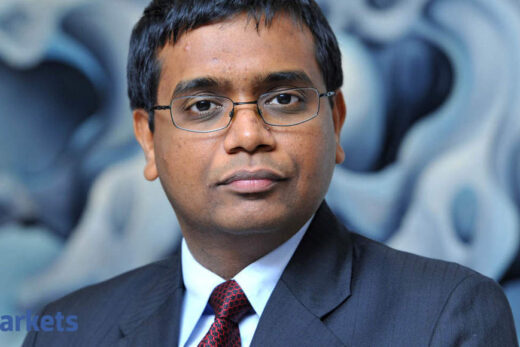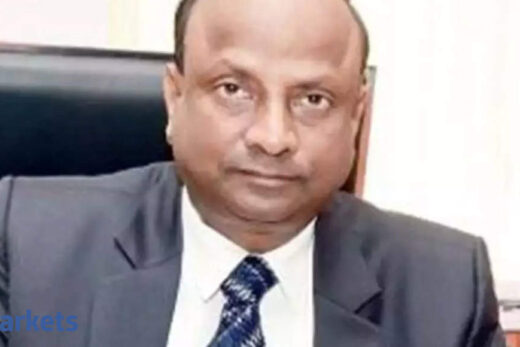SBI has come out with a very resilient performance in this very tough environment. What led to lower slippages on a quarter on quarter basis as well as stable margins?
As you said, it was a very tough quarter but nevertheless it is the resilience of the bank and the commitment of its employees to ensure that we stay clear in terms of the asset quality and remain in focus when it comes to leveraging various channels for building up our asset book that helped. That is the reason why we have seen a decent growth in our retail assets which is almost about 16%.
Though the corporate book remained muted, it is essentially on account of the fact that the real economy and perhaps also the corporates have deleveraged quite a lot. We have seen under utilisation by the corporates as far as their sanctioned limits are concerned. Hopefully, going forward, if the corporates decide to borrow, we will have enough liquidity in place and we are very well capitalised to support any credit growth which they would like to avail.
Not just SBI, but several other banks have also told ET Now that this time around retail delinquencies have been a cause of concern. You yourself in the presser mentioned that for the first time you have seen a lot of stress on the home loan side as well as MSMEs. How soon do you see the stress easing?
Post 16th June when the unlock started happening and restrictions on mobility were removed, our forces on the ground could move into the field and could reach out to the customers for effecting the recovery. From June 16 onwards to July 30, we have seen a pullback of over Rs 4,700 crore and as a result, when it comes to home loan book, the GNPA has come down from about 1.34% to about 1.12%. So we have seen a significant pullback.
A majority of our home loan borrowers are first-time home loan borrowers. Almost 50% of the book relates to SME borrowers and as SMEs had seen huge disruption in the cash flows, that led to the situation we had warned about. But with the recovery of the cash flows for SMEs, we will be in a position to see the pullback there. We will be in a position to see results in terms of even the restructuring in home loans.
Besides, of course, retail segment are there other segments as well where you are seeing a lot of stress and would that mean that the banks perhaps are going go slow on giving advances to such sectors. Are you seeing pain in any other sectors?
I do not think we will be going slow on the retail because as I mentioned, going slow would have been only if at all there were some challenges in the underwriting principle. We do not have any challenge in the underwriting. Underwriting is actually holding very well and the only thing is collection. It is going to be effort elastic and we are expecting that there will not be a repeat of the kind of situations going forward, which we have seen in the first quarter on account of lockdown. Already, about 48 crore people have been vaccinated in the country. We should be in a position to move around and economic activity should look up and with that in mind, we do not have any intentions of slowing down as far as our retail book is concerned and we will continue to grow well in terms of home loan, personal loan, Xpress Credit and also gold loan, etc. — all part of the focus for us as a bank.
When do you actually see the recovery kicking in? How do you see credit growth going forward in the days to come?
The credit growth is a function of how the real economy reacts to the situations and if at all RBI guidance is something to be reckoned. They have talked about 8% plus kind of a growth in GDP and normally we as a bank grow 1% over and above the GDP growth. Going by those numbers, we expect to grow at about 9% as far as the credit is concerned.
Our credit growth as well as the investment growth are somewhere around 6.7%. So 9% looks quite likely. But yes, the only hope is that the economy bounces back and demand comes back.
If at all we get to see these positives I am quite confident we should be in a position to clock 9% kind of a growth.
At the presser, you did mention that you will be looking to contain your slippages within the 2% mark. What gives you such confidence despite the uncertainty that looms large?
Almost over 48 crore people in the country have got vaccinated and that is one factor. Second is 74% of our staff has got vaccinated as far as the first dose is concerned. So there is a conscious effort on the part of the bank to ensure that all employees get vaccinated so that we are in a position to take care of the third wave if it happens.
I think 48 crore is a very decent number for a country of our size and I am sure it will help quite a lot in terms of negotiating the situation when it comes to the third wave if at all it happens. These are some of the contributing factors which help us have reasonable confidence that we should be in a position to contain.
In our corporate book, we have already provided adequately so that we do not have much of a challenge. The only challenge is in the retail book and as I mentioned, in the retail book, the recoveries are all effort elastic and that is a function of the health and hygiene issues. We have taken adequate precautions to address the health and hygiene issues by getting our people vaccinated.
What about recovery from some of the written off accounts as well? This quarter, we saw some money flowing in from several steps that the Enforcement Directorate took with respect to the Kingfisher accounts. Besides that, the DHFL resolution process is also in the works. What are your expectations in terms of recovery in the coming quarters?
We are quite open to all the options which are available for affecting recoveries when it comes to our stressed asset accounts. Though internally, we are eyeing more than Rs 10,000 crore and we have seen good traction in that direction with about Rs 1,692 crore coming from Kingfisher itself. We are hoping other accounts also will help us in reaching the numbers we have in mind.
Apart from that OTS compromise and NCLTs and the ARCs are the options which are available and we should be in a position to affect the recovery which we have planned for ourselves in the current year.
Could you give us any sort of a number on the recovery? Also, what is happening with the telecom sector? What is your exposure in Vodafone? How are you looking at what the government’s next few steps could be for the telecom sector?
We are very closely watching the situation and we are taking adequate steps to ensure that the balance sheet remains protected.
You did talk about the corporate side of your loans as well. Tell ua the corporate investment cycle and how soon do you expect growth coming in as far as the corporate credit pick up is concerned?
In corporate credit, we have about Rs 130,000 crore plus proposals in pipeline and we have unutilised limits of about Rs 300,000 crore. But much of the corporate demand will be seen once the revival of demand is seen and corporates are happy availing the facilities which are already sanctioned. We are more than comfortable when it comes to our capital position. We are more than comfortable about liquidity and we will be in a position to support any such demand which is coming.



